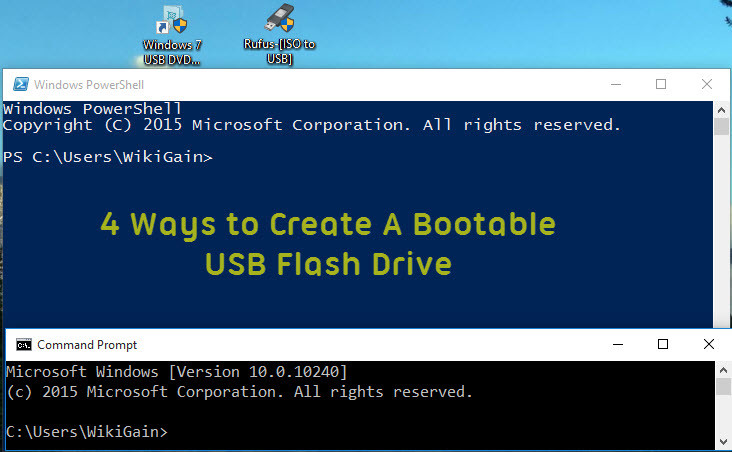

- Rufus create bootable usb windows 7 instructions how to#
- Rufus create bootable usb windows 7 instructions install#
- Rufus create bootable usb windows 7 instructions update#
This helps ensure BIOS updates and other low-level operations work properly. You also could use a bootable USB drive to run old DOS applications, but that tends not to work so well. These utilities still use DOS to ensure they have low-level access to the hardware without any other programs interfering or Windows getting in the way.
Rufus create bootable usb windows 7 instructions how to#
RELATED: How To Use DOSBox To Run DOS Games and Old Apps Follow any instructions provided in the manufacturer’s documentation to run the application. Once you are in DOS, you can run the program you copied to your USB drive by typing its name at the DOS prompt. If your computer does not automatically boot from the USB drive, you may need to change your boot order or use a boot menu to select the device from which you want to boot. You can now boot into DOS by restarting your computer with the USB drive connected. RELATED: How to Boot Your Computer From a Disc or USB Drive Copy these files into the root directory of the USB drive after formatting it.
Rufus create bootable usb windows 7 instructions install#
To gain a flying speed when you install Windows 10 using the bootable USB drive, It’s recommended that you use a USB 3.0 drive as your bootable USB drive. Before creating your Windows 10 bootable USB drive, you need to prepare a USB flash drive with more than 8GB storage. You’ll need a third-party tool to turn that. But most Linux distributionslike Ubuntuonly offer an ISO disc image file for download. For example, you may have a BIOS.BIN and FLASHBIOS.BAT file you need to run in DOS. To create your Windows 10 bootable USB drive Using Rufus. A bootable USB drive is the best way to install or try Linux. To actually run these files from DOS, you will need to copy them over to your newly-formatted USB drive. Otherwise, you need a Windows 7 installation compact disc.

If you have a Windows 7 installation ISO file, you can choose 'Image file' for the source, and select the ISO file. If you are using Windows Vista or higher operating system, you need confirm the UAC dialog to continue.
Rufus create bootable usb windows 7 instructions update#
You have probably created this boot drive because you have a DOS-based program to run, such as a BIOS update utility or another low-level system program. Click the button, 'Create bootable USB drive'. The formatting process should be extremely quick-usually a matter of seconds-but it can take longer depending on the size of your USB drive. Select the “Create a bootable disk using” option and then choose “FreeDOS” from the dropdown menu next to that option.Ĭlick the “Start” button to format the disk and copy the files necessary to boot into FreeDOS. The DOS option requires FAT32 and isn’t available for the other file system options like NTFS, UDF, and exFAT. RELATED: What's the Difference Between FAT32, exFAT, and NTFS?įrom the “File System” dropdown menu, choose the “FAT32” format. Note that this process will erase the contents of your USB drive, so make sure you’ve backed up any important files on the USB drive first. First, connect your USB drive to the computer and select it in the “Device” dropdown menu. Step 2: Select Select MBR partition scheme for BIOS or UEFI ( Note: If your PC has UEFI bios, select the other two options. Download Rufus and run it with Administrator rights. Creating a DOS-bootable USB drive in Rufus is simple. Instructions to create a Bootable Windows 7 USB Flash Drive.


 0 kommentar(er)
0 kommentar(er)
